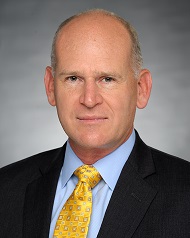ACOs that started in the Medicare Shared Savings Program’s Track 1 in either 2012 or 2013 must determine whether to move to a risk-based model by their third contract periods, which begin in 20191. A number of the MSSP ACOs are making strides in improving quality, reducing hospitalization and waste in Medicare. The Centers for Medicare and Medicaid Services’ (CMS) Administrator Seema Verma noted these achievements recently in a significant speech that highlighted how ACOs that have taken on downside risk have “shown significant savings to the Medicare program while advancing quality.”2 A separate study found that many of the ACOs in Track 1 Shared Savings would have been successful in a downside risk model.3
However, Verma took aim at participants in upside-only ACO models, citing poor returns and noting: “[E]ven more concerning, these ACOs are actually increasing Medicare spending, and the presence of these upside-only tracks may be encouraging consolidation in the market place, reducing competition and choice for our beneficiaries. While we understand that systems need time to adjust, our system cannot afford to continue with models that are not producing results.”
In a recent survey by the National Association of ACOs, many ACOs have indicated they would quit the voluntary program if required to take on downside risk next year4. Provider concerns center around unpredictability of the MSSP ACO attribution model and financial projections, substandard past performance in upside models and whether there will be consistency in federal policy with relation to value based payment.
Among these legitimate trepidations, at least the consistency of federal policy around value-based payment may be less murky than many had supposed it might be under the new administration. The goal of generating savings within Medicare by moving physicians into advanced Alternative Payment Models (APMs) under the Medicare Access and CHIP Reauthorization Act (MACRA) remains a top strategic goal. CMS is reportedly “absolutely continuing to move on the train to value-based payments”5. The agency believes, rightly or wrongly, that it has allowed providers to slowly invest and gather the expertise and means to be successful in managing populations and cost and quality targets.
This is arguable. However, it would be a critical strategic failure to ignore the imperative of state and federal government payers to attack perceived cost drivers, the biggest of these being in-patient hospital stays. While there are many impediments to success in downside risk in Medicare ACOs (patient attribution, out of network costs, and high rural care costs among others), demographically, Medicare is ground zero for the need for cost control and better care. Growing Medicare and Medicaid populations with shrinking government payment rates are on the rise. Seniors 65 and older are expected to account for more than 20 percent of all Americans by 2050, numbering nearly 84 million out of a total population of 400 million.
Additionally, many of the infrastructure costs expended to participate in the shared savings program are now ‘sunk costs’ that can either be foundational or abandoned. Turning back now could undermine the progress to improve quality of care, reduce readmissions and better coordinate care for patients. Beyond improving quality of care, however, the ultimate goal is not simply winning in Medicare; it is building the capacity to command more of the premium dollar with all payers.
The decision to take downside risk requires thorough financial analyses reflecting the changing reimbursement market in each line of business, not simply in the ACO. Consequently, tackling the strategic and financial issues to moving profitably to downside risk, while highly challenging, are essential capabilities. They are manageable with good planning, strategic investment and excellent implementation.
How should MSSP Track 1 providers make the decision to move into downside risk? Here are a few considerations for evaluating a move into downside risk:
- Medicare populations are high utilizers in general, and super-utilizers in many instances. Results from California’s delegated providers participating in Medicare Advantage (MA) demonstrate remarkable efficiencies in hospital bed day reductions largely attributable to high care coordination.
- A key difference in the above results is the ability in MA to limit non-network care. One significant concern of providers weighing downside risk in an Advanced APM is the struggle to contain out-of-network costs for Medicare fee-for-service populations, since Medicare beneficiaries have no significant incentive to stay in network. Many ACOs have found that when patients have no reason not to go anywhere they want, they go anywhere they want, at great cost to the ACO in a downside risk model. To help keep Medicare patients in-network, a broad network of primary care physicians and specialists must participate in the MSSP ACO. Developing well-organized local provider and Community Based Organization (CBO) networks can combine access to the right level of care at the right time and place with social services support.
- Are other commercial payers on board with risk contracting? Few payers are offering workable risk-based contracts that proportionately support the infrastructure build. Without supportive commercial partnerships, other payers may reap the benefits of the ACO’s system impacts, such as reduced admissions, without paying for them. Physicians want to practice one high-quality standard of medicine – asking them to differentiate care based on payment model will not resonate. Commercial payers have to come to the table to pay their fair share of infrastructure costs for quality gains.
- Readiness to manage populations under financial risk arrangements in an “all payor” environment requires continued emphasis on changing site of care, the use of predictive analytics, risk stratification and care management capabilities. Base risk stratification on both claims and clinical data to proactively identify “impactable” members within a population to reduce high cost of care. Real-time claims data is essential to identify patterns in member and provider utilization of services for rapid intervention.
- Current, reliable data is the essence of the value-based payment environment. Integrated information platforms must support care across the provider network. Data requirements must outline dependencies among claims data (including pharmacy claims), member services, medical management infrastructure and HIE to coordinate efficient tracking and reporting. Improvement relies on identification of process bottlenecks, variances and contributing factors creating inefficiency and inconsistency in patient management and unnecessary hospitalizations and ED visits.
The biggest consideration, of course, is past performance. Obviously, organizations currently doing well in shared savings arrangements are poised to make the additional investments to succeed in downside risk. However, those organizations with either minimal or no shared savings should tiptoe into downside risk.
Risk is quite risky – sound financial analysis and assessment is essential to determine whether that move fits with the organization’s strategic goals and direction, infrastructure capability, as well as likely physician buy-in. Significant two-sided risk sharing is a relatively new development for physicians and hospitals operating in a fee-for-service payment and PPO product environment. While “baby steps” may be currently disfavored by CMS, they are the building blocks of successful risk culture, infrastructure build and high-quality patient care.
For more information on how to evaluate your MSSP ACO’s ability to move to downside risk, please contact Allen Miller at amiller@copehealthsolutions.com or (213) 542-2234.
Footnotes:
1 Upside-only ACOs in MSSP are supposed to move towards two-sided models after two agreement periods in the program. For those which joined in 2012 or 2013, this would mean they have to advance to the riskier models in 2019.
2 CMS Administrator Seema Verma, AHA Annual Membership Meeting, May 7, 2018, Washington, DC
3 Avalere study citation, Medicare accountable care organizations (ACOs) and their physician participants would have earned additional net payments of $966 million in 2016 if they had qualified for the 5% bonus payment now available to clinicians participating in advanced alternative payment models (AAPMs) under the Quality Payment Program (QPP)
4 National Association of ACOs, Press Release, May 2, 2018
5 Kate Goodrich, MD, director of the Center for Clinical Standards and Quality and CMO for CMS, March 13, 2018

